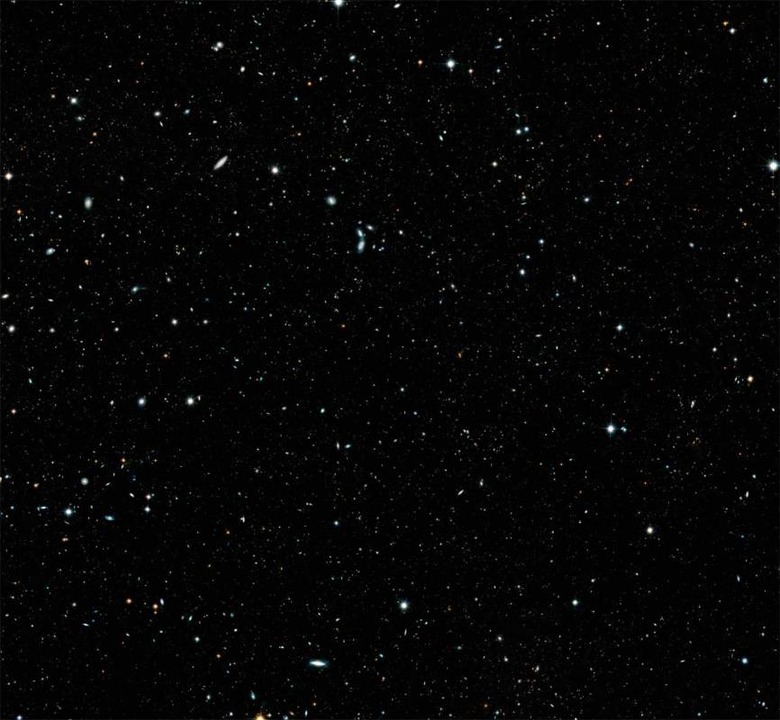Incredible Mosaic Of Hubble Images Shows The Deep Universe
The Hubble Space Telescope has been taking some of the most breathtaking images of the deep universe since it was put into orbit many years ago. Recently astronomers developed a mosaic of the distant Universe that uses a large number of images Hubble as taken. The mosaic of images seen here document 16 years of observations for the NASA/ESA Hubble Space Telescope.
The main image is called the Hubble Legacy Field and contains roughly 265,000 galaxies that stretch back to 500 million years after the Big Bang. The new images are created using nearly 7,500 individual exposures. The Hubble team says that the images is the first in a series of Hubble Legacy Field images and compromises the work of 31 Hubble programs by different teams of astronomers.

Hubble has spent more time on this small area of the sky than on any other region of the sky with a total of more than 250-days of observations. The team is currently working on a second set of images that total more than 5,200 additional Hubble exposures. Hubble greatly expanded the ability of astronomers to see distant galaxies.
Before 1990 when the Hubble Space Telescope launched, astronomers could see galaxies up to about seven billion light-years away, which was halfway back to the Big Bang. Ground-based observations were unable to establish how galaxies formed and evolved in the early Universe. Scientists note that deep-field views of galaxies like these help them to trace the expansion of the universe to develop an understanding of the physics of the cosmos.
The team also says that galaxies show when the chemical elements originated and enabled the conditions that could support life. As incredible as the mosaic created from many years of Hubble observations are, the NASA/ESA James Webb Space Telescope will allow astronomers to push even deeper into the legacy filed to reveal how infant galaxies developed over time.
